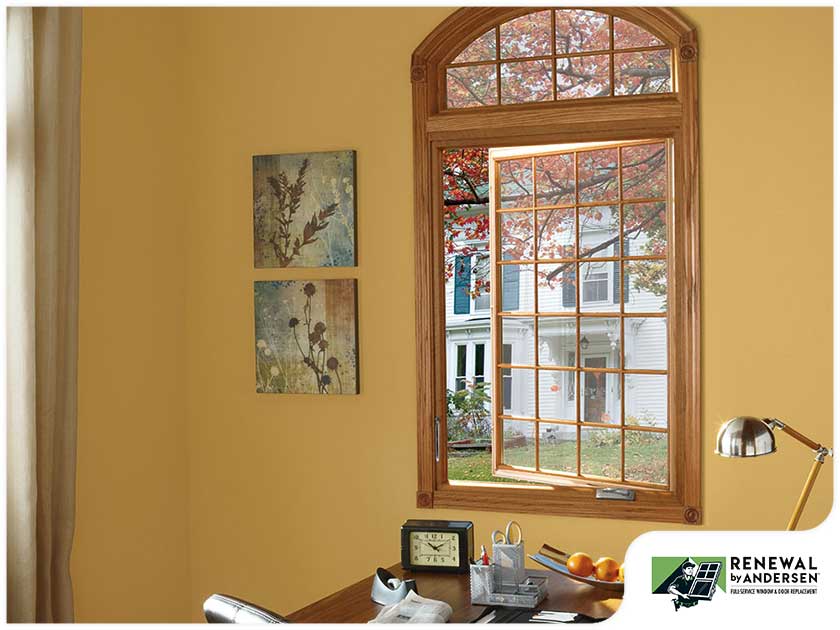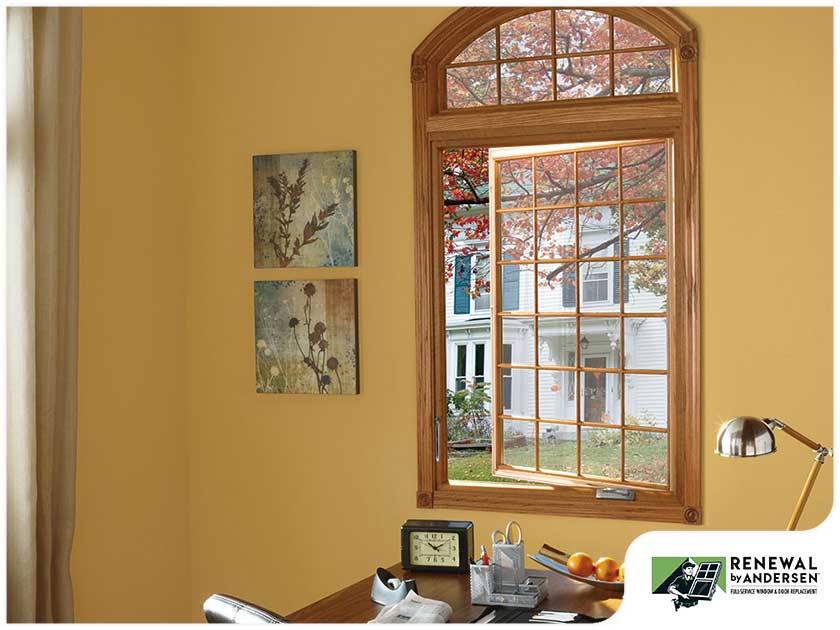With knowledge of the cost and environmental impact of energy usage, natural ventilation has become an increasingly attractive method for ventilating homes. Instead of utilizing mechanical devices, such as air conditioners, natural ventilation makes use of air movement and pressure differences to keep living spaces cool and comfortable. Cooling breezes carry heat out of the home, replacing warm indoor air with cool, fresh air from the outside and effectively decreasing the temperature inside the home.
In this article, sliding doors installer Renewal by Andersen® of Knoxville discusses the types and benefits of natural ventilation at home.
What Are the Types of Natural Ventilation?
There are two main types of natural ventilation that occur in buildings: wind-based ventilation and buoyancy-operated ventilation.
Also called cross ventilation, wind-based ventilation relies on the wind to send cool air from outside into the home through an inlet, like an open window; while an outlet, like a window on the opposite side of the room, forces the stale, warm interior air out. It is a low-cost ventilation technique for specific applications. Cross ventilation is not recommended in locations that are prone to dust buildup and contamination. It also does not operate in areas where wind movement is not desirable.
On the other hand, buoyancy-operated ventilation works fundamentally like a fireplace. This technique operates on the fact that hot air naturally rises and cool air remains low. In tall, large buildings, the tendency of warm air to rise promotes air transfer throughout the entire building — a phenomenon known as the stack effect or thermal buoyancy. The warm air that rises exits the building through a natural ventilator, such as a roof vent or a higher window opening. Meanwhile, the cooler, denser air enters the building through the lower openings. According to sliding doors companies, this procedure can take place even on cool and pleasant days.
What Are the Advantages of Natural Ventilation?
Whether upgrading an old home or designing a new one, it is important to make natural ventilation an integral part of the design. Here are the exciting advantages you can get from it:
- Better Humidity Control: When indoor air is too hot and humid, moisture can build up and pose a greater risk of damage to your furniture and electronics. Too much moisture can also become a breeding ground for mold and mildew, which when left unchecked, can produce a musty smell around your home. With natural ventilation, you have access to a continuous flow of fresh and healthy air, providing better control for heat and humidity.
- Better Health: Excessive moisture invites mold and mildew, which can trigger allergic reactions and cause other respiratory illnesses. By making use of natural ventilation with replacement doors and windows, however, you can easily improve the air quality within your home. It allows you and your family to breathe cleaner and healthier air and helps keep your day-to-day living comfortable.
- Lower Maintenance Costs: It is no secret that the year-round operation and maintenance of heating and cooling systems at home can be relatively costly. In fact, these devices are often the biggest contributors to your electricity bills. While natural ventilation still requires a bit of upkeep to deliver optimal comfort, it does not cost as much as HVAC systems. Plus, these significant energy savings mean there is more money for you to renovate or upgrade other parts of your residential property.
- Easier Access to Natural Light: Natural ventilation is ultimately achieved with doors and windows. Because these openings usually feature large expanses of glass, adding them to the design of your home as natural ventilators also allows copious amounts of daylight to flow into your rooms, such as the kitchen, bathroom, living room and bedrooms.
- Environmentally Friendly: Minimizing your carbon footprint and dependence on fossil fuels has a positive impact on the environment. Unfortunately, many sustainable and eco-friendly options come at a high cost, with some taking decades to pay off. This is where natural ventilation with energy-efficient replacement doors and windows comes in handy. You do not need to spend a lot of money to take full advantage of the benefits of these openings.
How Do You Boost Natural Ventilation at Home?
Strategically placed doors and windows are fundamental to natural ventilation. Here are three easy ways to make the most of your natural ventilation at home:
- Position windows and doors based on climate and site. In order to take advantage of prevailing breezes that vary depending on location, landscape, climate and time of day, your home should be carefully oriented on a site. In coastal areas, for example, breezes come from an offshore direction, while in steep and alpine regions, breezes typically travel downslope.
- Take advantage of cool air at night. At nighttime, homes normally cool when warm air radiating from inside is replaced with cooler night air. Unless it is a safety hazard, consider leaving your patio doors slightly open at night to let warm air escape. Clerestory and double-hung windows work exceptionally well for this purpose as hot air gets out through higher-level openings.
- Select types of windows to direct or deflect airflow. The size and design of windows influence airflow patterns and whether the movement of air is directed or deflected. Casements, which have hinged frames that open inward or outward, offer optimal ventilation when fully opened and can limit airflow when they are not fully opened.
Contact Us for Window and Door Replacement
Renewal by Andersen of Knoxville is a premier source of beautiful and energy-efficient replacement windows and patio doors in Tennessee. We will walk you through all your options and assist you in finding the styles and sizes that are best suited for your home. To schedule an in-home consultation or request a no-obligation quote, call (866) 609-5033 or fill out our online form. We work with residents in and around Maryville, TN.


